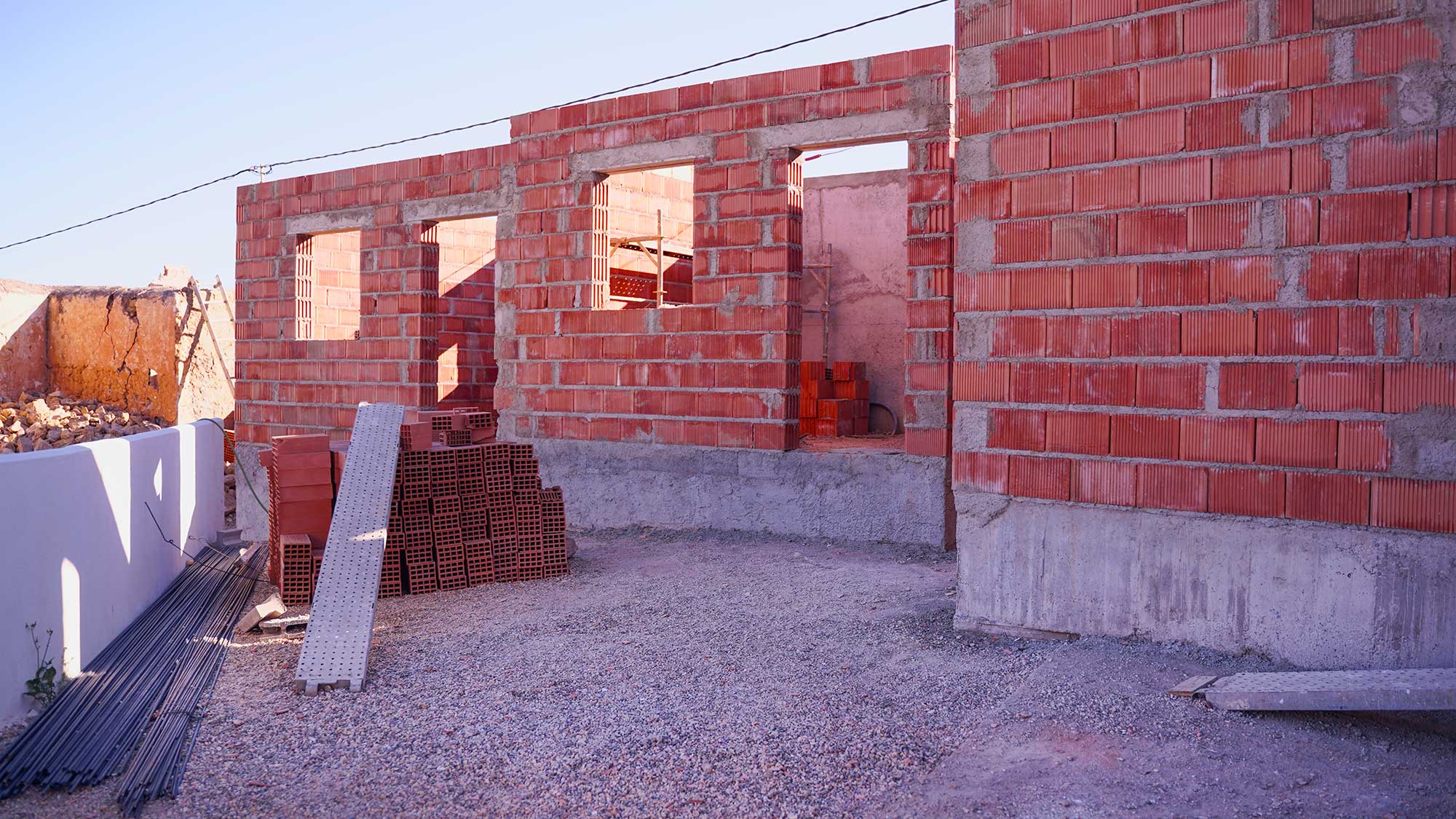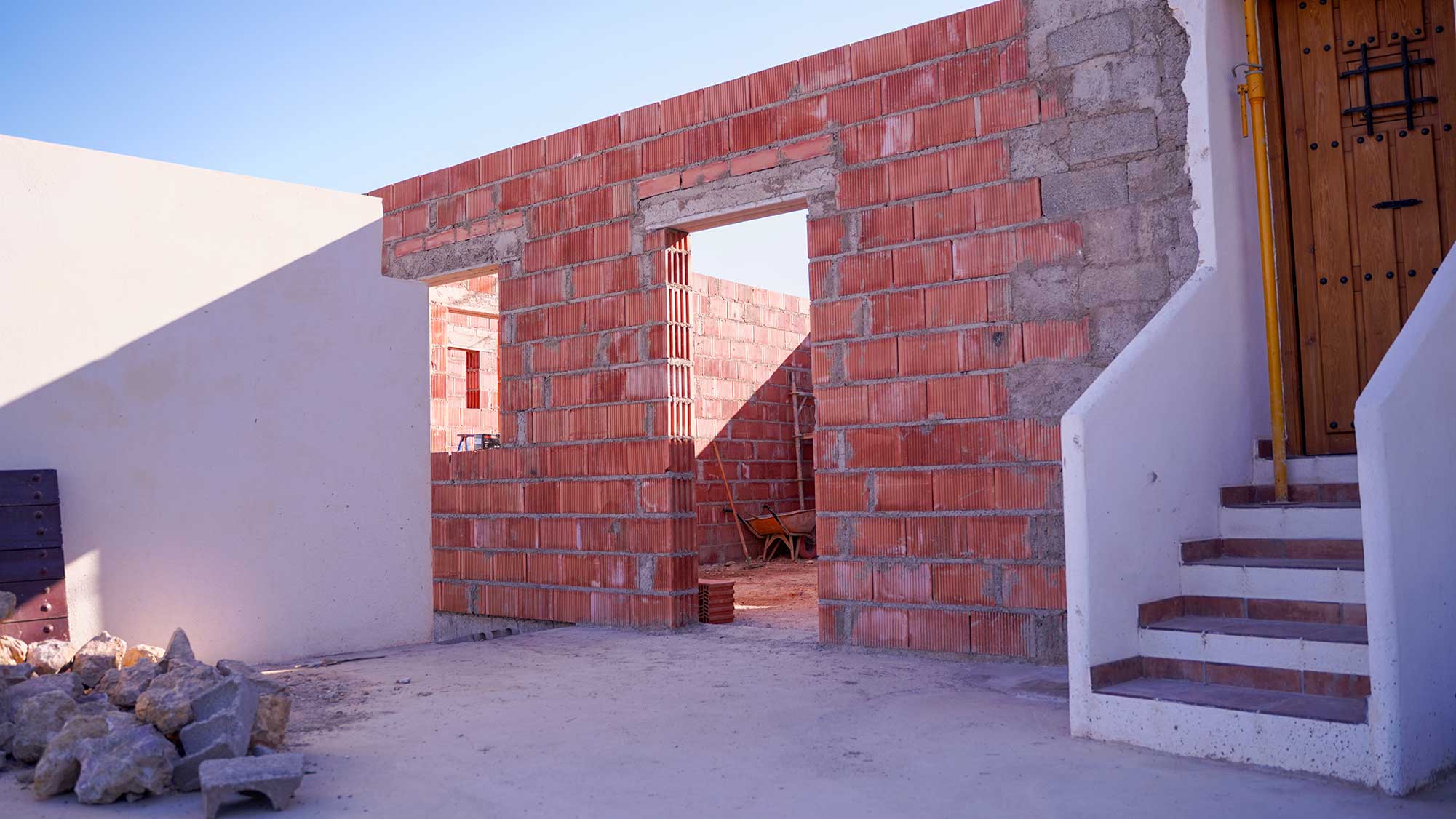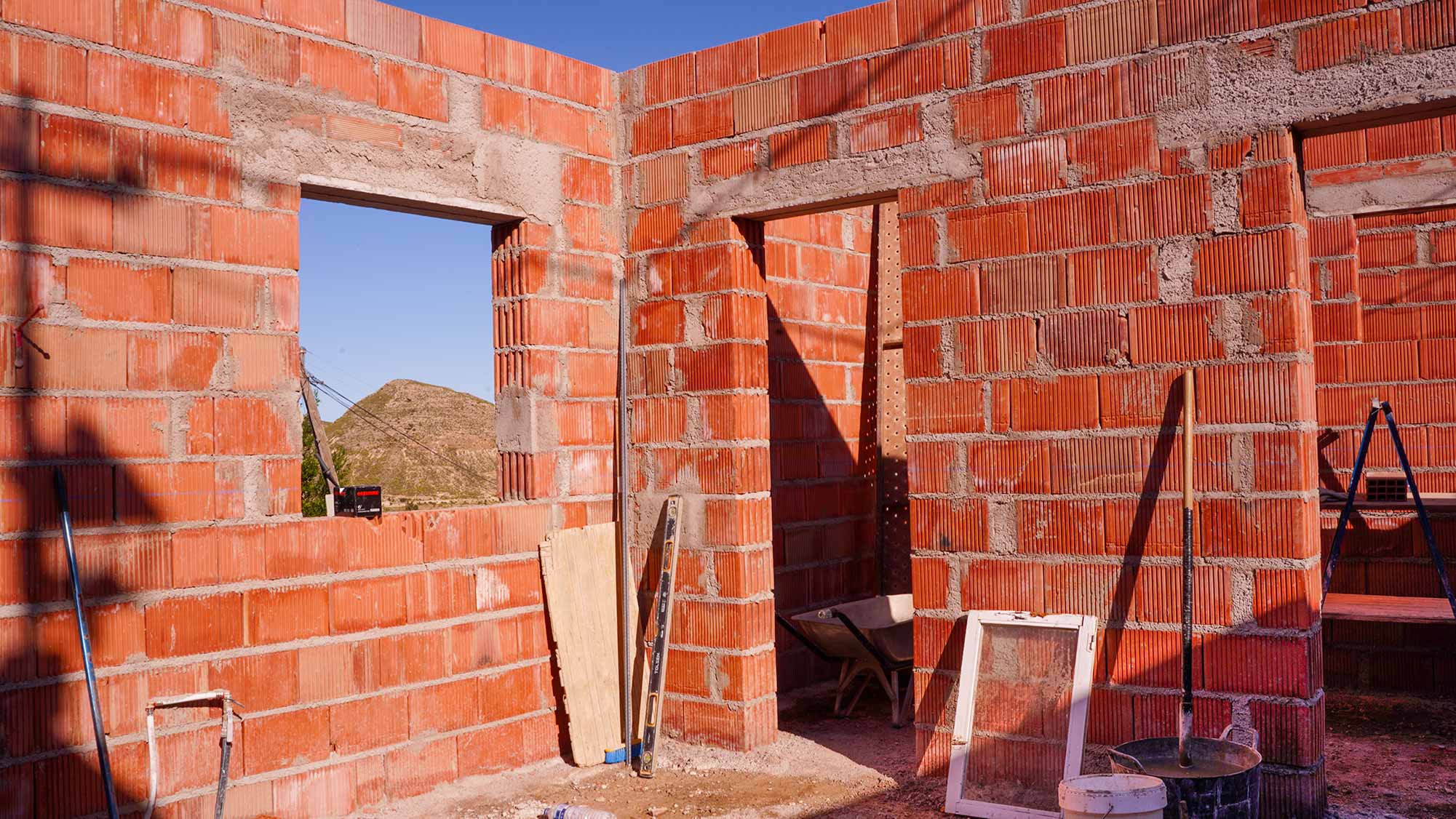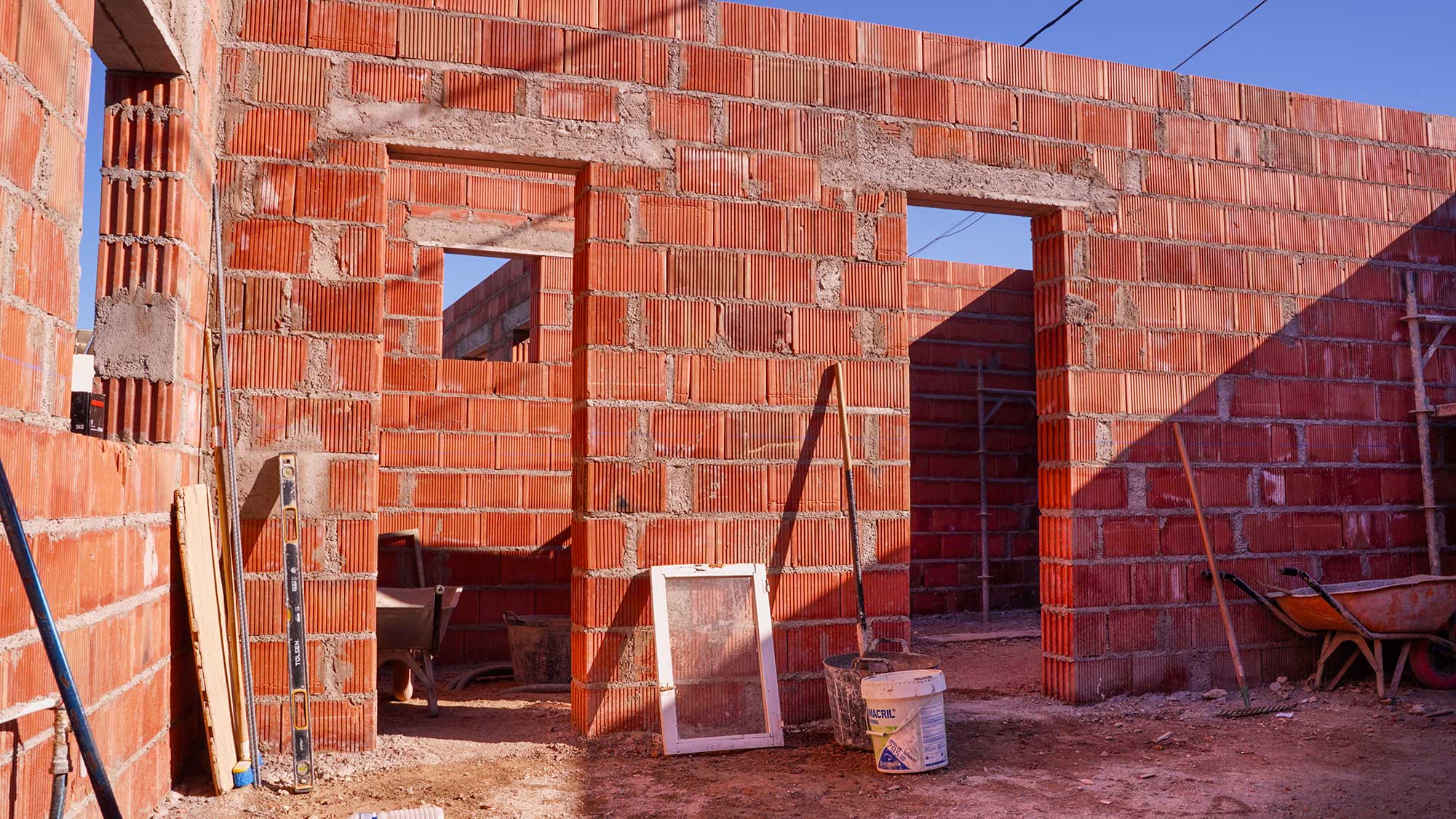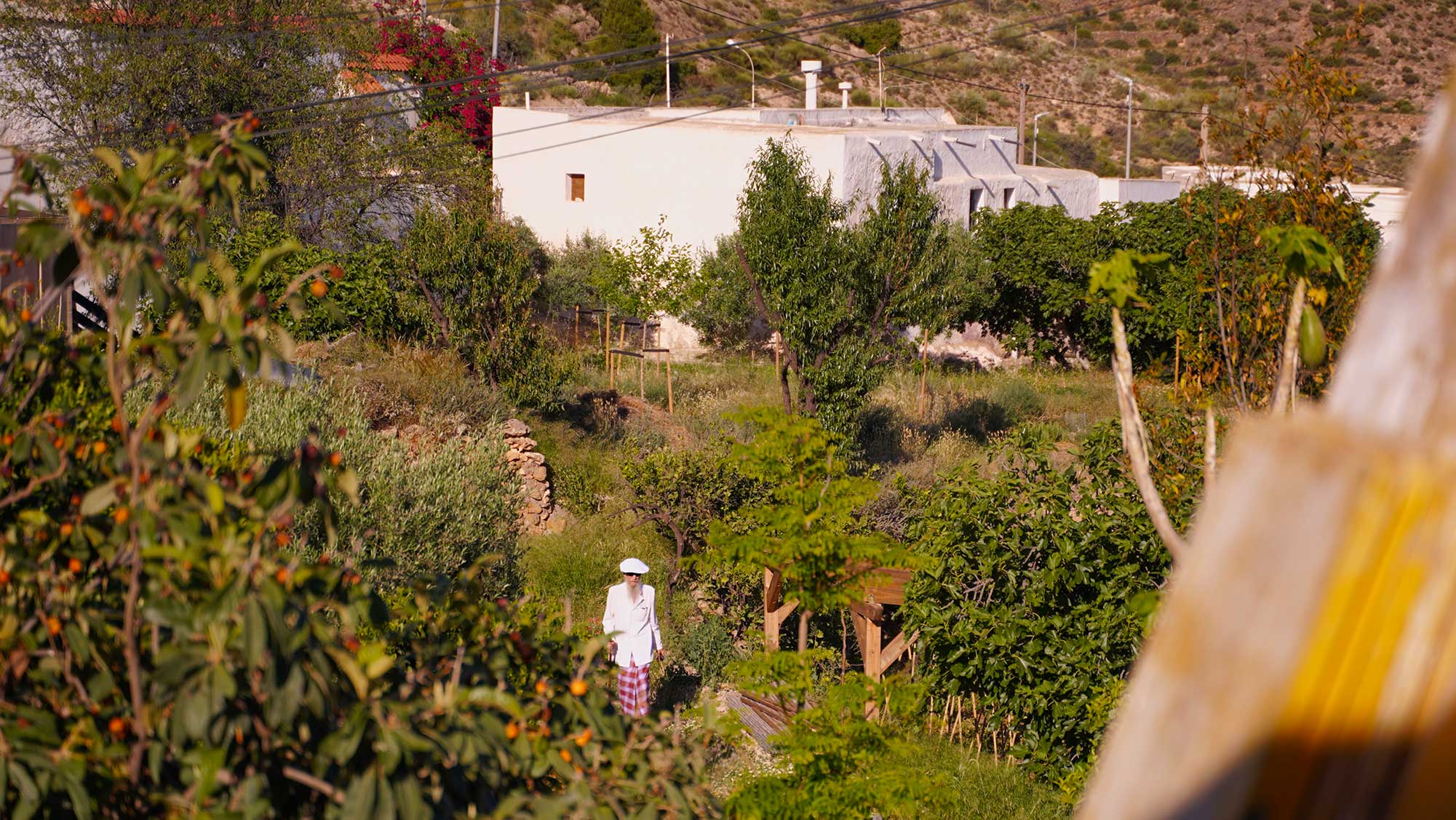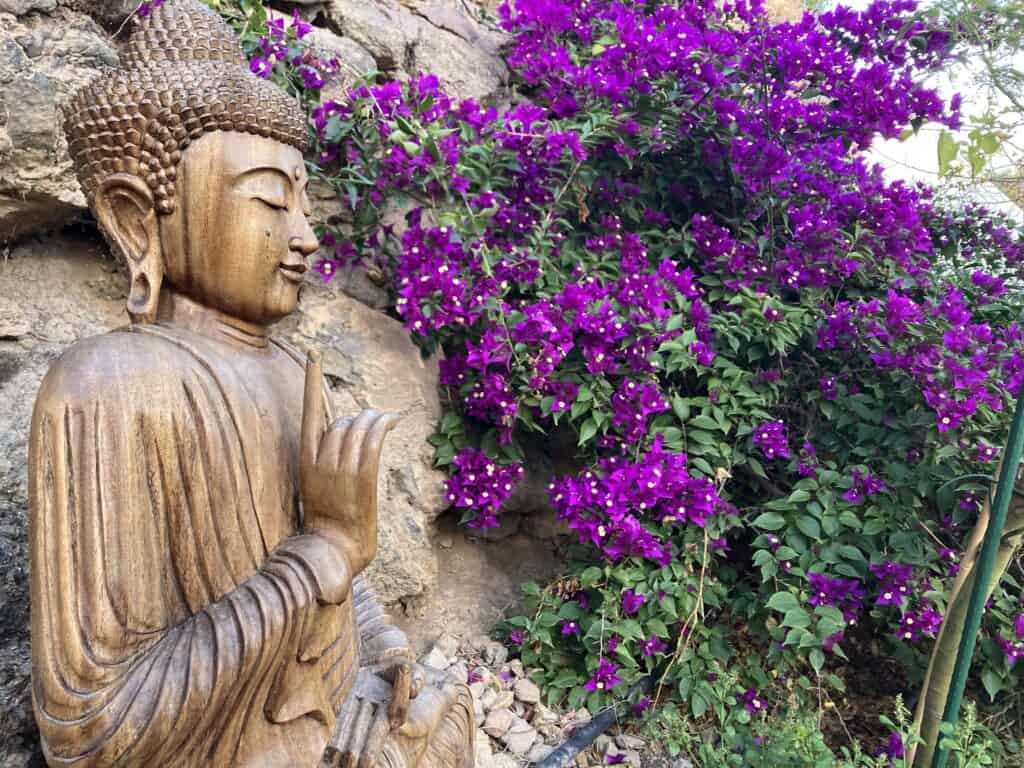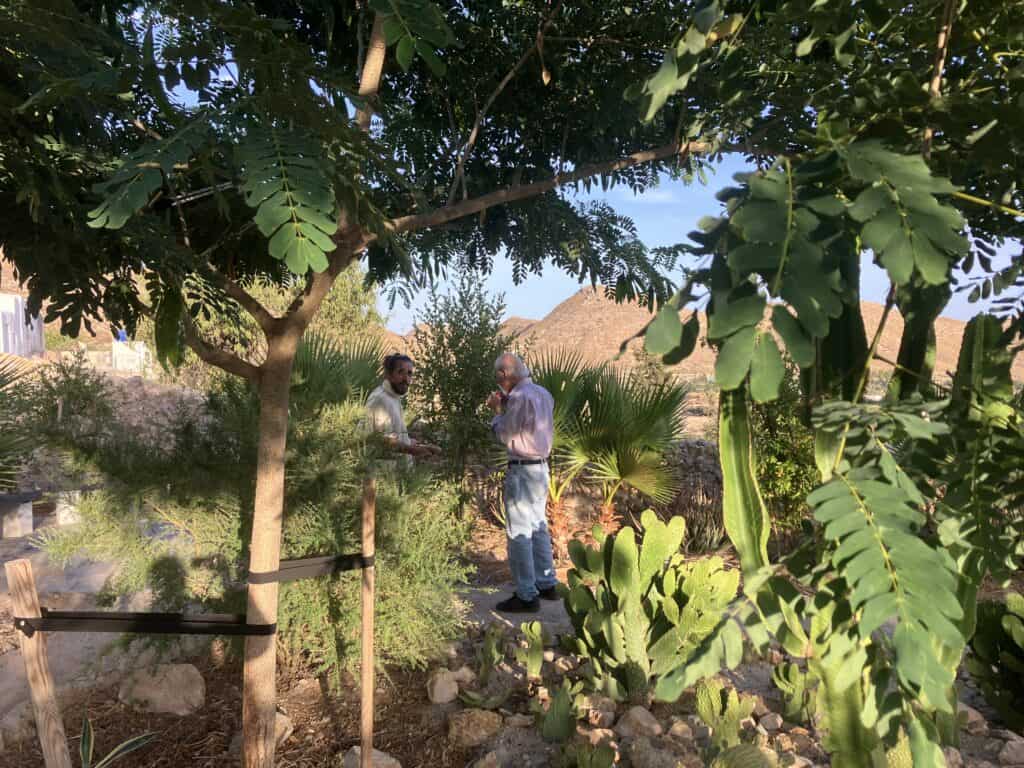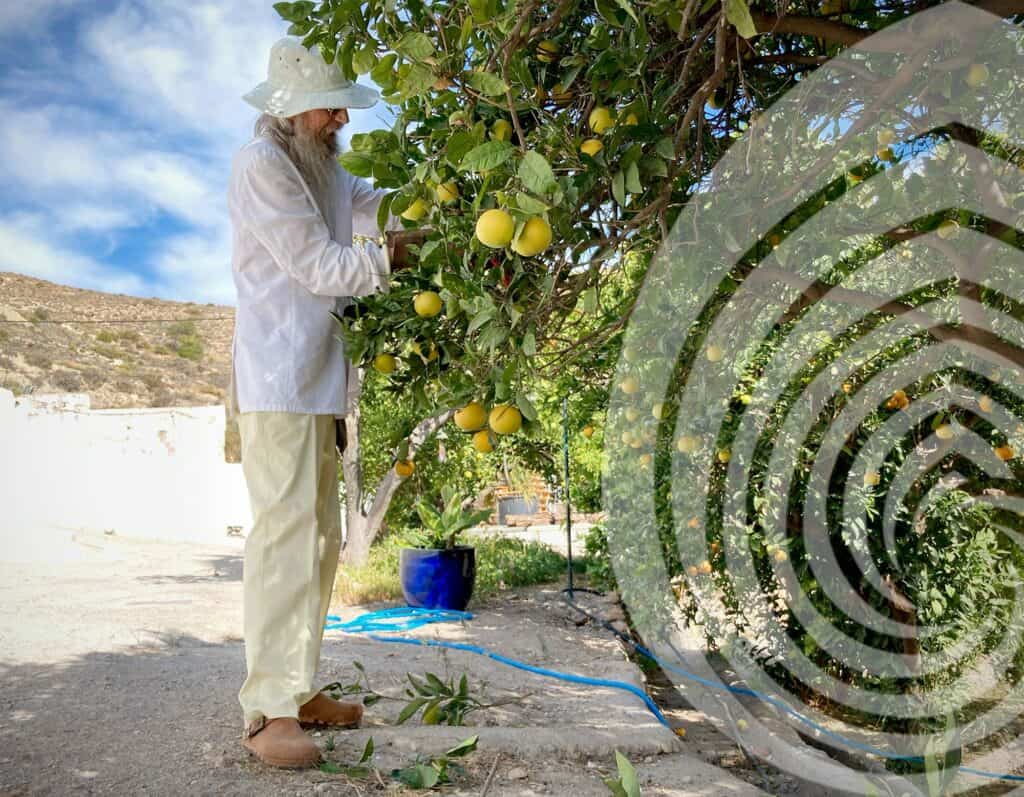Living in Nijar, at 400m above sea level against a mountain range, means the weather can be quite extreme. Cold nights in April and May, heavy winds that can occur anytime, and when it’s hot, it’s really hot. Also, the change of the season is quite abrupt; spring made room for summer almost overnight. Within one week the night temperatures went from 13-15 degrees to 22-25 degrees and during the days it is already starting to become too warm to work outside. We noticed this change on many fronts; the greenhouse got so hot in the daytime that most plants stopped growing, so we planted most of them in the soil outside and are moving the rest to another spot. The sea of flowers and the fields of greens have started to turn brown and dry and we started to cut them down to use it as mulch. The newly planted small bushes and herbs (like gum rockrose, lavender, thyme and rosemary) need watering twice a day in their first weeks in the ground and an extra layer of mulch so they don’t dry out (some plants, mostly the thyme did not survive even with the extra effort). And most of us are starting to take a siesta after lunch on days when temperatures get around 30 degrees.
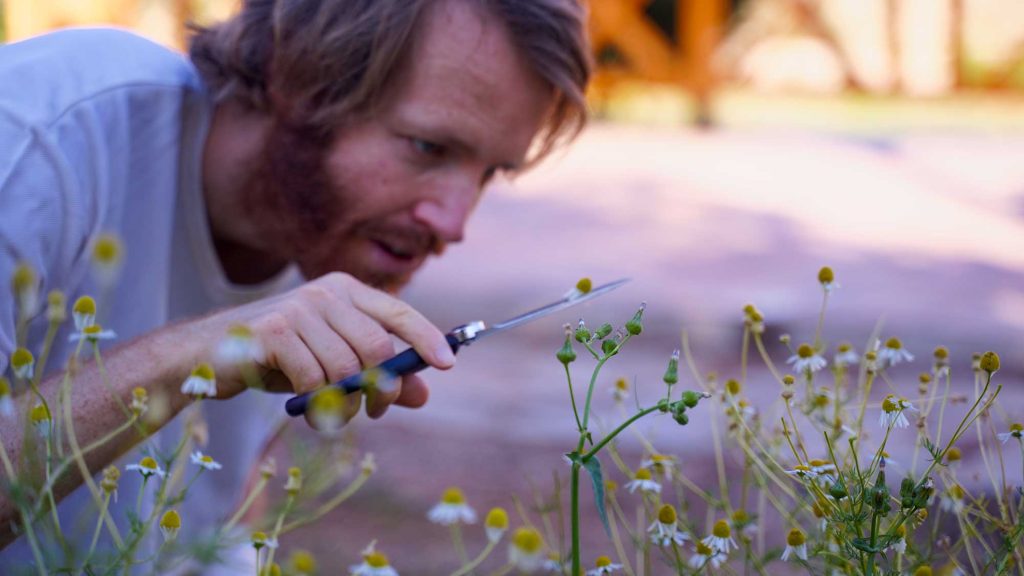

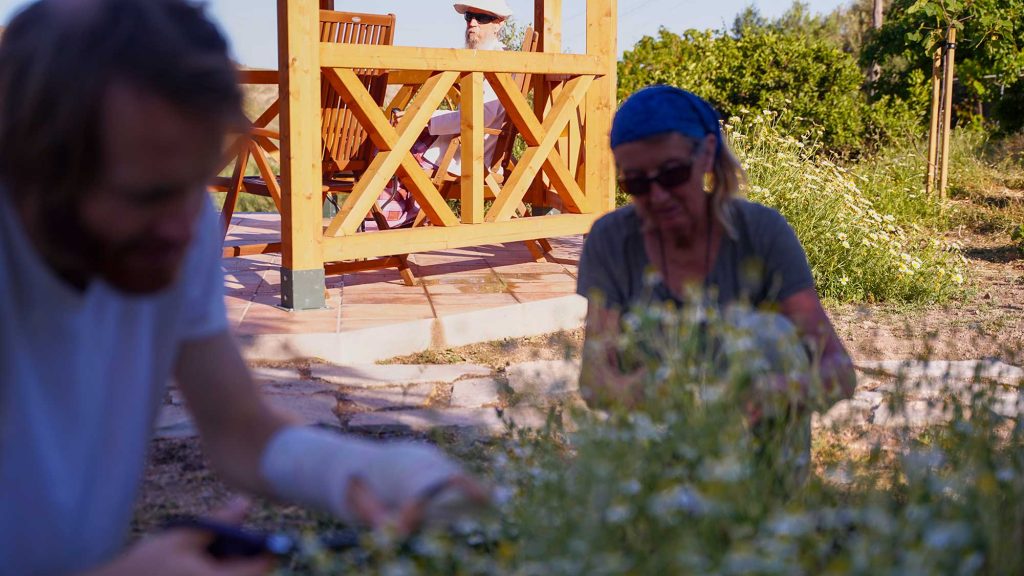
It is always a delight when Yoginâm visits the Asharum garden. When Yoginâm appears, the general concentration changes into a more peaceful, silent orientation, which is difficult to explain. If the temperature is agreeable and the wind has died down, Yoginâm settles in the pavilion of the garden during the late afternoons. His presence is enough to realise why we are here. A chore in the garden becomes a moment of meditation without the need to sit on a cushion.
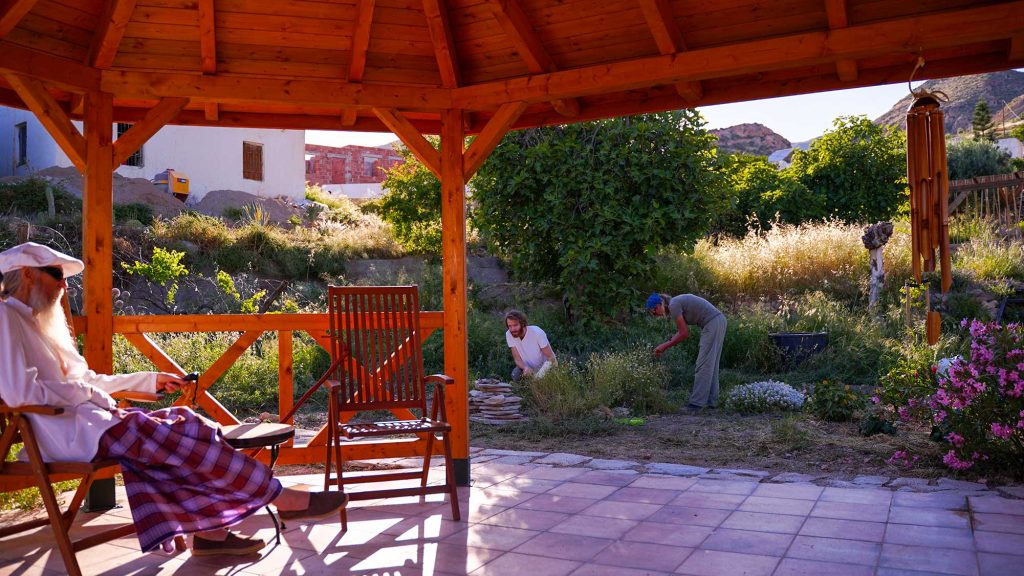
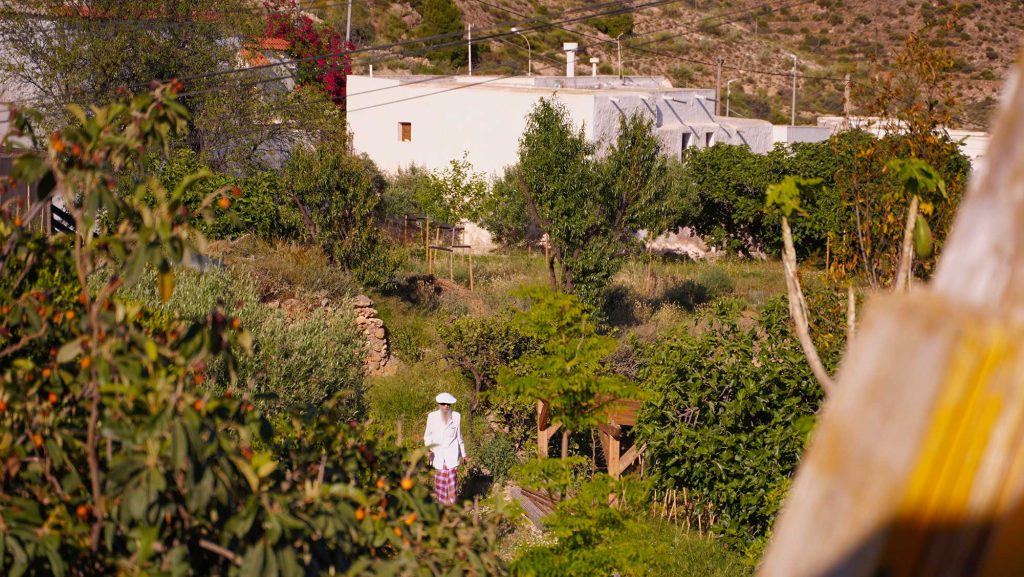
We received many guests these last weeks of which a few were new to all of us. We were donated some trees (Iman and Roelof both bought and planted a plum and a kaki tree) and Mario donated a gasoline powered grass cutter as the battery-powered one is not strong enough to cut through all the plants in our garden. As always, we are very grateful for these contributions to our Asharum.


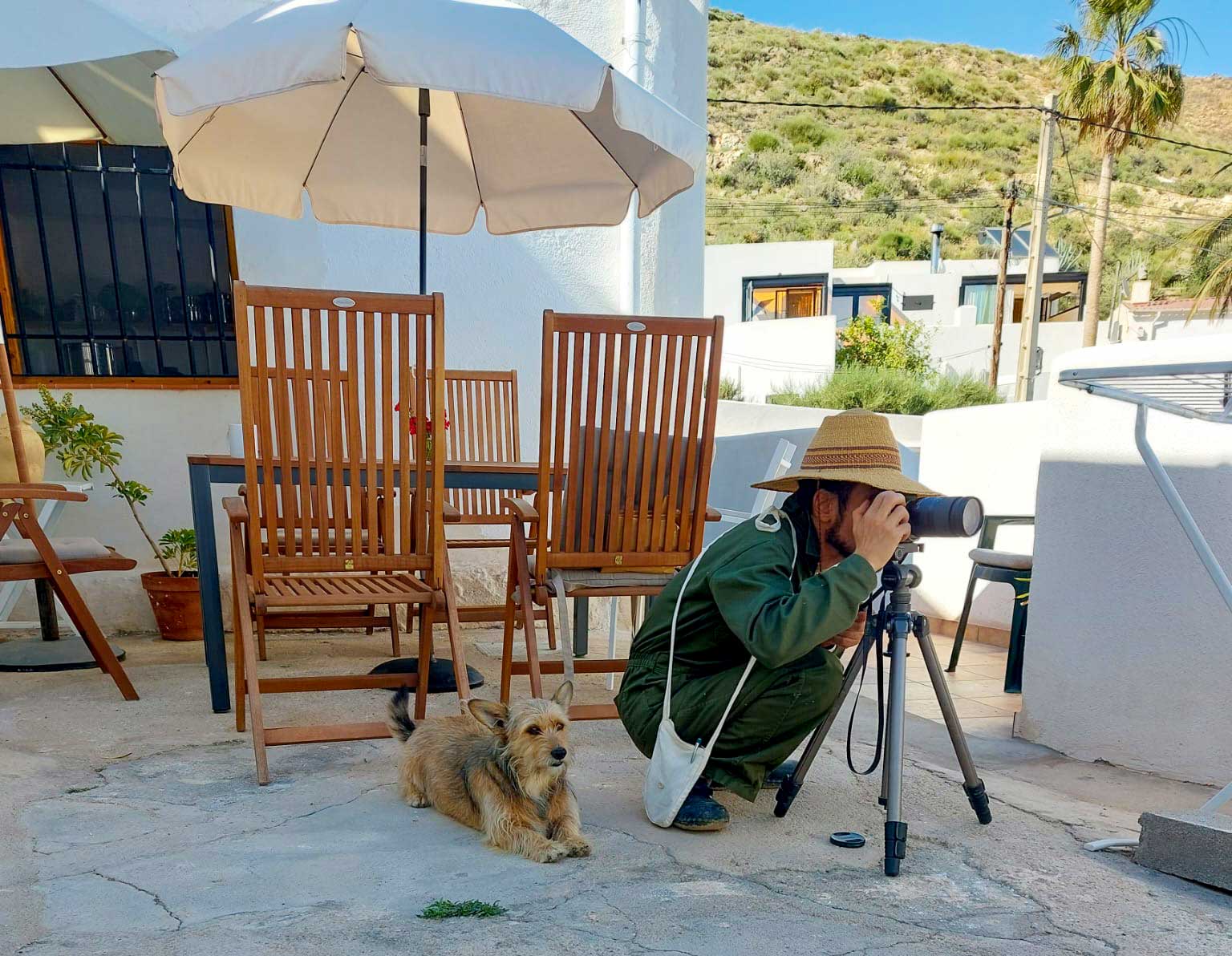
The garden of the Asharum Nijar: Back to the Roots
As we pay more attention to food production, we discover the intricacies of germinating seeds and raising baby plants to adulthood. Timing and attention is of utmost importance here. Cold nights don’t help, and when the nights warm up, the daytime sun is already burning. It went well with the pumpkins, peas, beans and peppers, but the okras, melons, lettuce, cabbage, kale and herbaceous plants were more specific with regards to temperature and watering. We are experimenting with different methods of potato planting and placed pumpkins on several spots to see which one they prefer. We also planted sweet potatoes and hope to learn how to produce copious harvests from this tasteful and nourishing crop. For the climbing plants like peas, beans and the more exotic akebia, we’ve constructed a bamboo structure which gives a professional look to our amateur gardening endeavour.
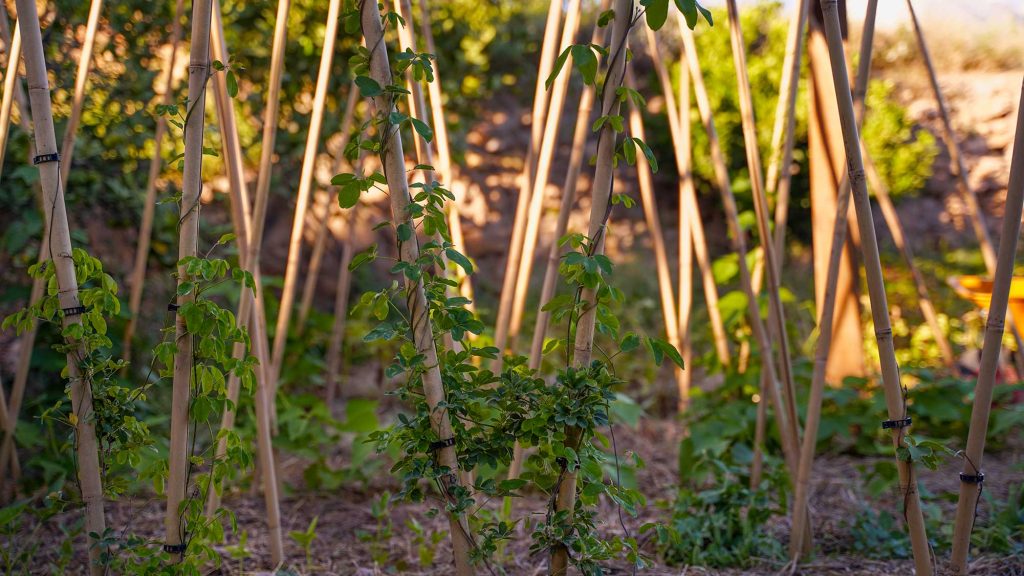

The rampant plants that are growing here naturally (usually called weeds, but we try to refrain from using that negatively charged word for living beings) need to be kept in check or removed around the planted plants, trees and food crops. They also invade the path we made throughout the garden and they are not easy to remove as their root system is tightly gripping the compacted soil. We are experimenting with different approaches to improve the soil, which is quite barren and clay-like with lots of stones, and we discovered that mulching with hay is an easy and effective approach on the short term. It reduces the solar impact and keeps the soil moist and cool, with the added bonus of reducing the growth of the naturally occurring plants as well as adding organic matter to the soil with the hay decaying over time. For the longer term improvement we have sown nitrogen-fixing and soil opening plants in places where the ground is bare. These plants can be used as mulch or for composting and their presence reduces the proliferation of the naturally occurring plants. Now, different types of mustard, clover, alfalfa, borage and lupin are growing throughout the garden.
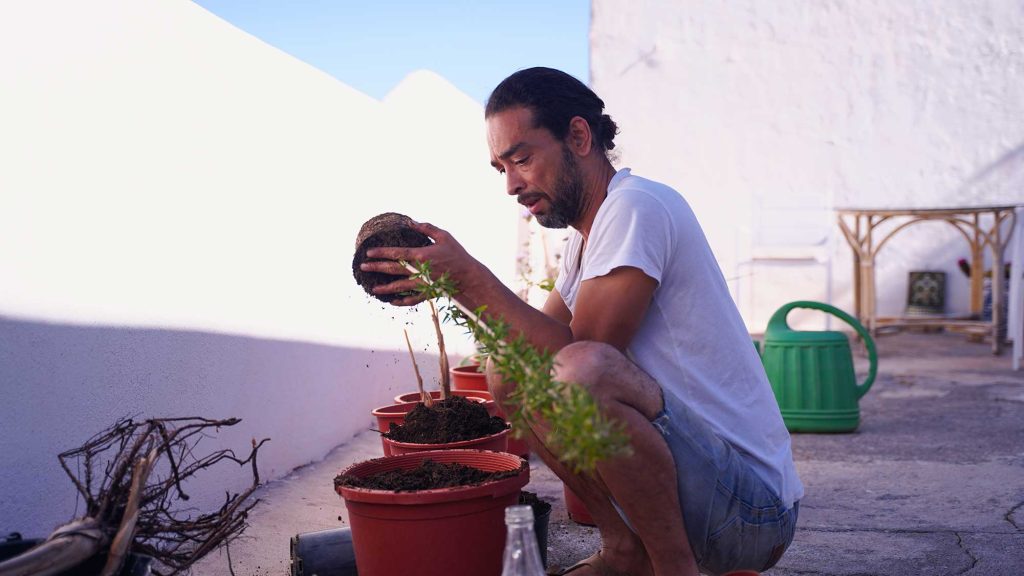
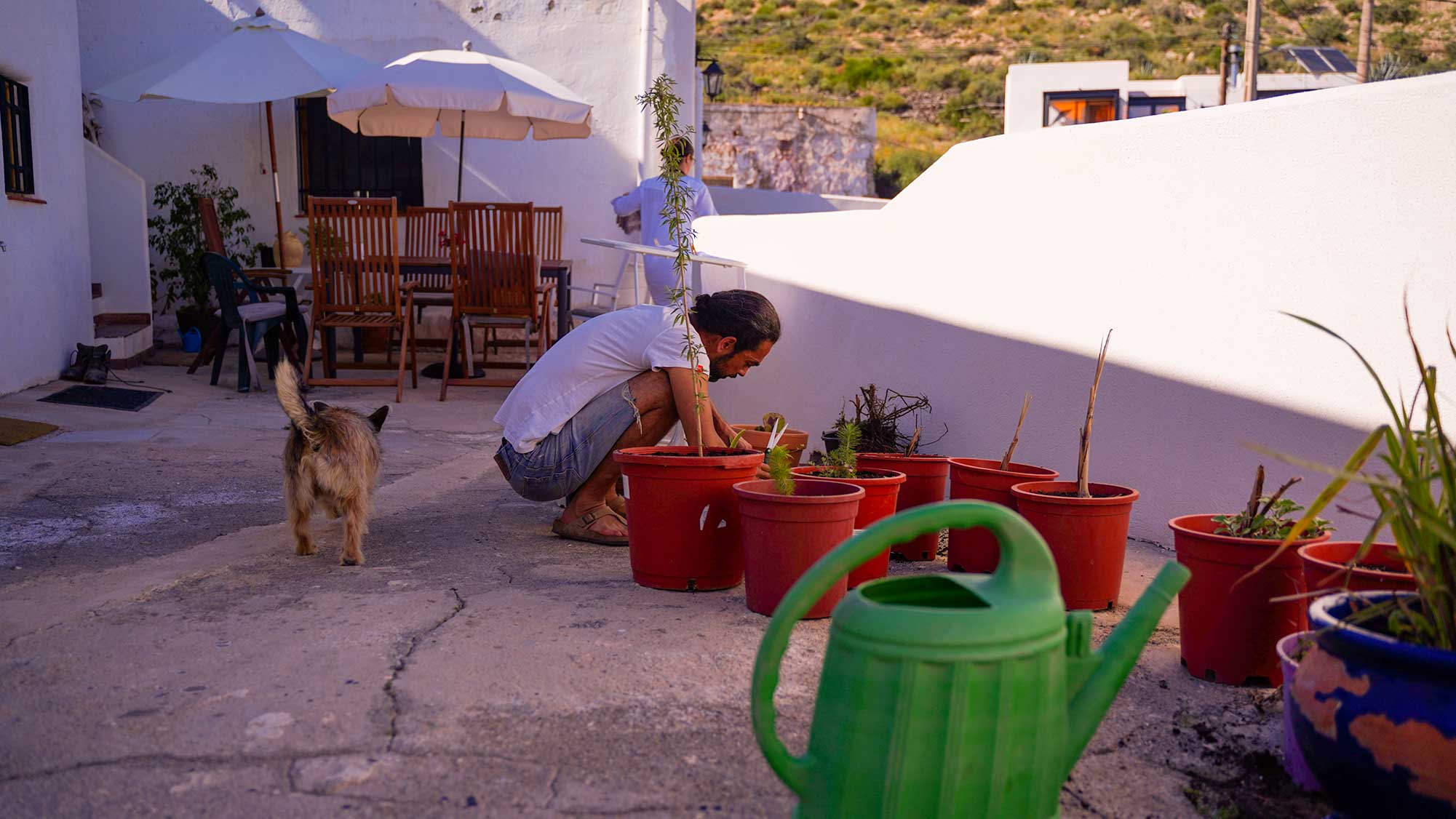
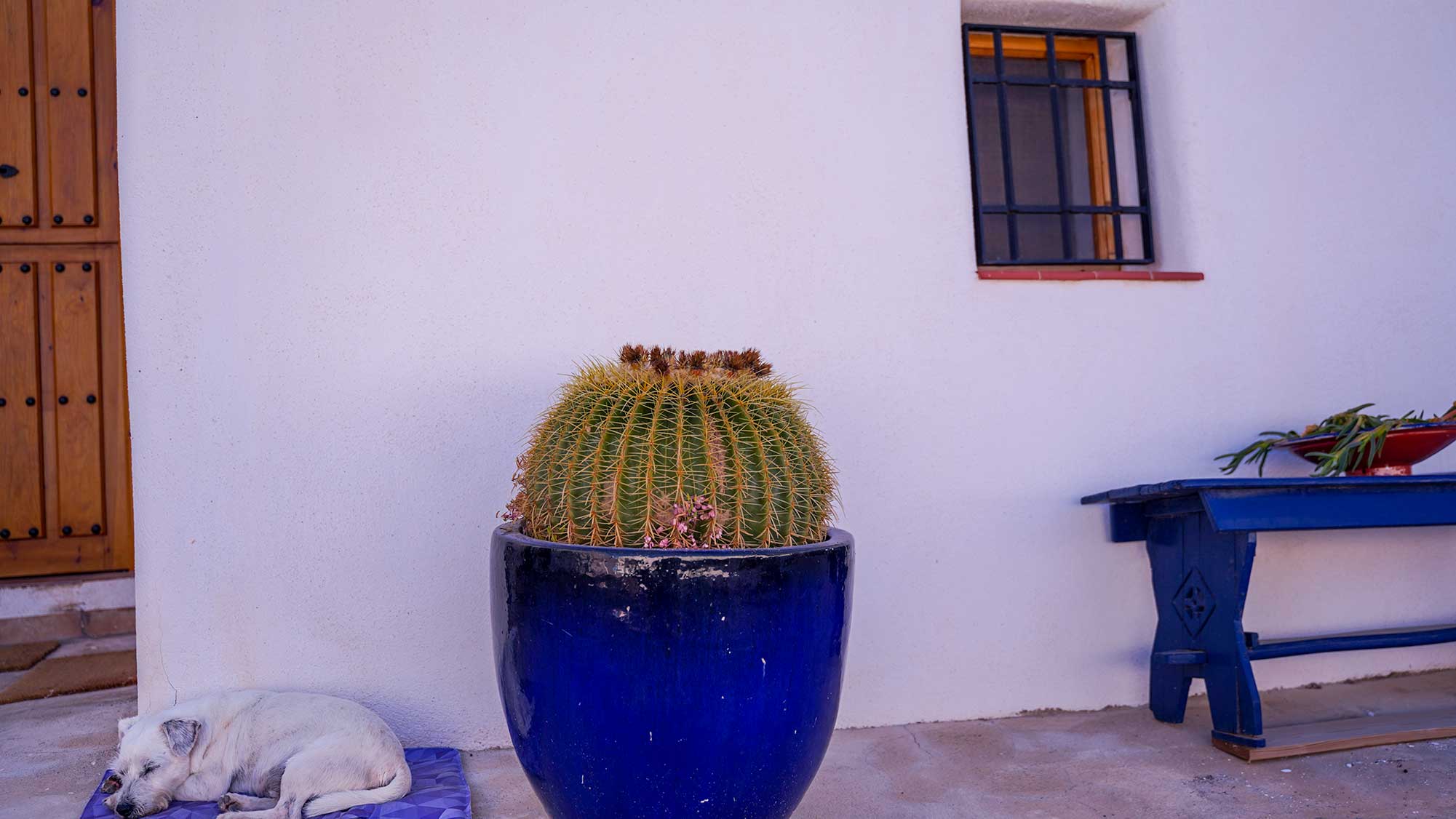
Some trees which we planted last year took their time to come back to life after winter. We were a bit worried as some of them still didn’t show signs of life while the month of May was well on its way, but luckily all of the trees are now budding and start to become green again. Thanks to Edwin, we improved the fixture of the trees with a better material to attach them to the poles so they can stand the heavy winds without being damaged. This improvement also contributes to the general feel in the garden as all trees now have a similar fixture, one we recognise from other locations where young trees are planted.
To our surprise the Jacaranda trees are starting to flower! We were told they would only show their beautiful purple coloured flowers a couple of years after planting, but they seem to be happy and developed enough to already grant us their splendour after one year. The nisperó or Japanese loquat has been giving a lot of fruits and we made a lot of marmelade and also tried to dry some of them. The fruit is sweet-sour and refreshing and so is the marmelade, in which we attempted to reduce the sugar content. The larger apple tree, which we pruned a few months ago, is blossoming abundantly and we look forward to the produce this fall.
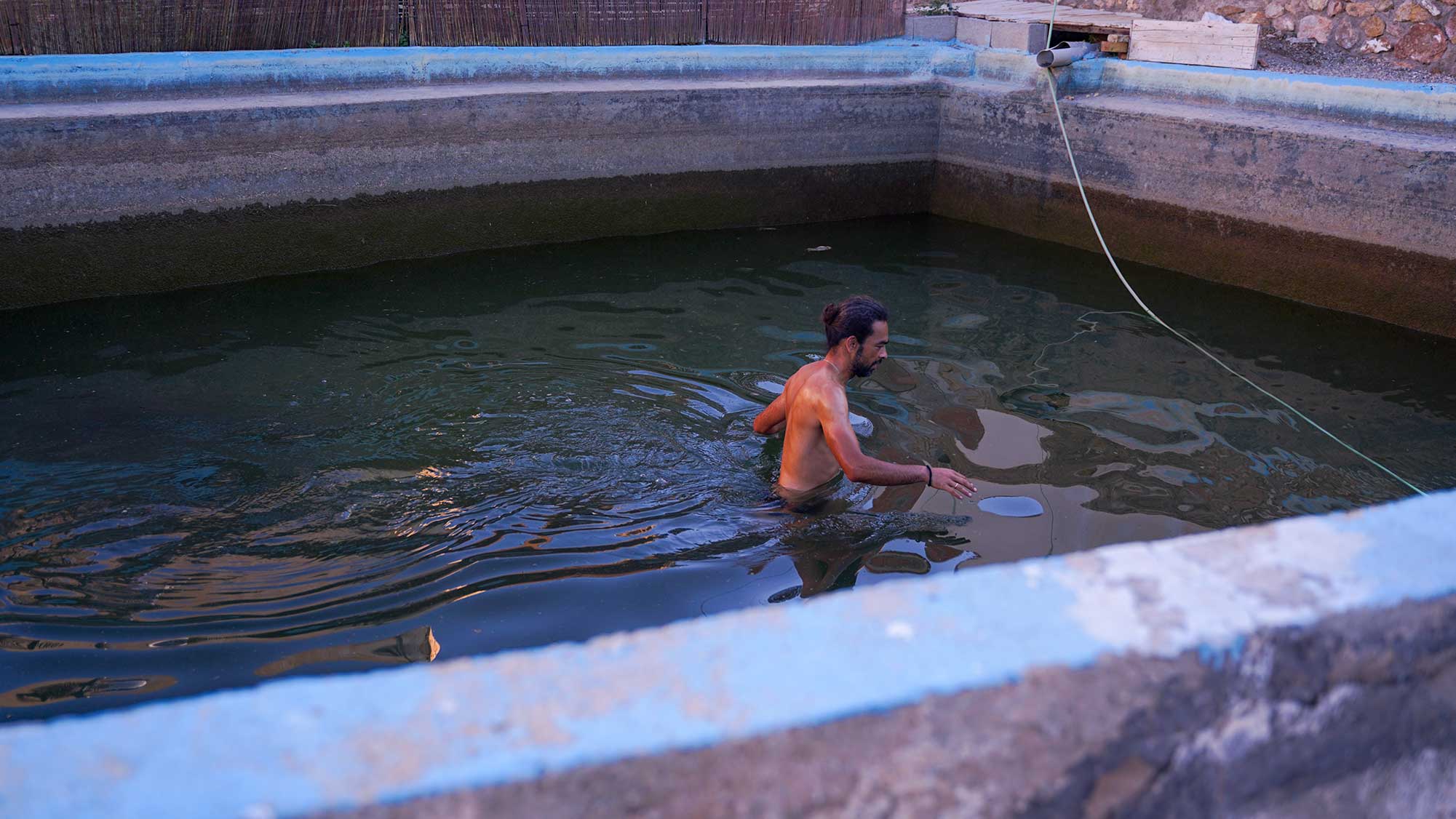
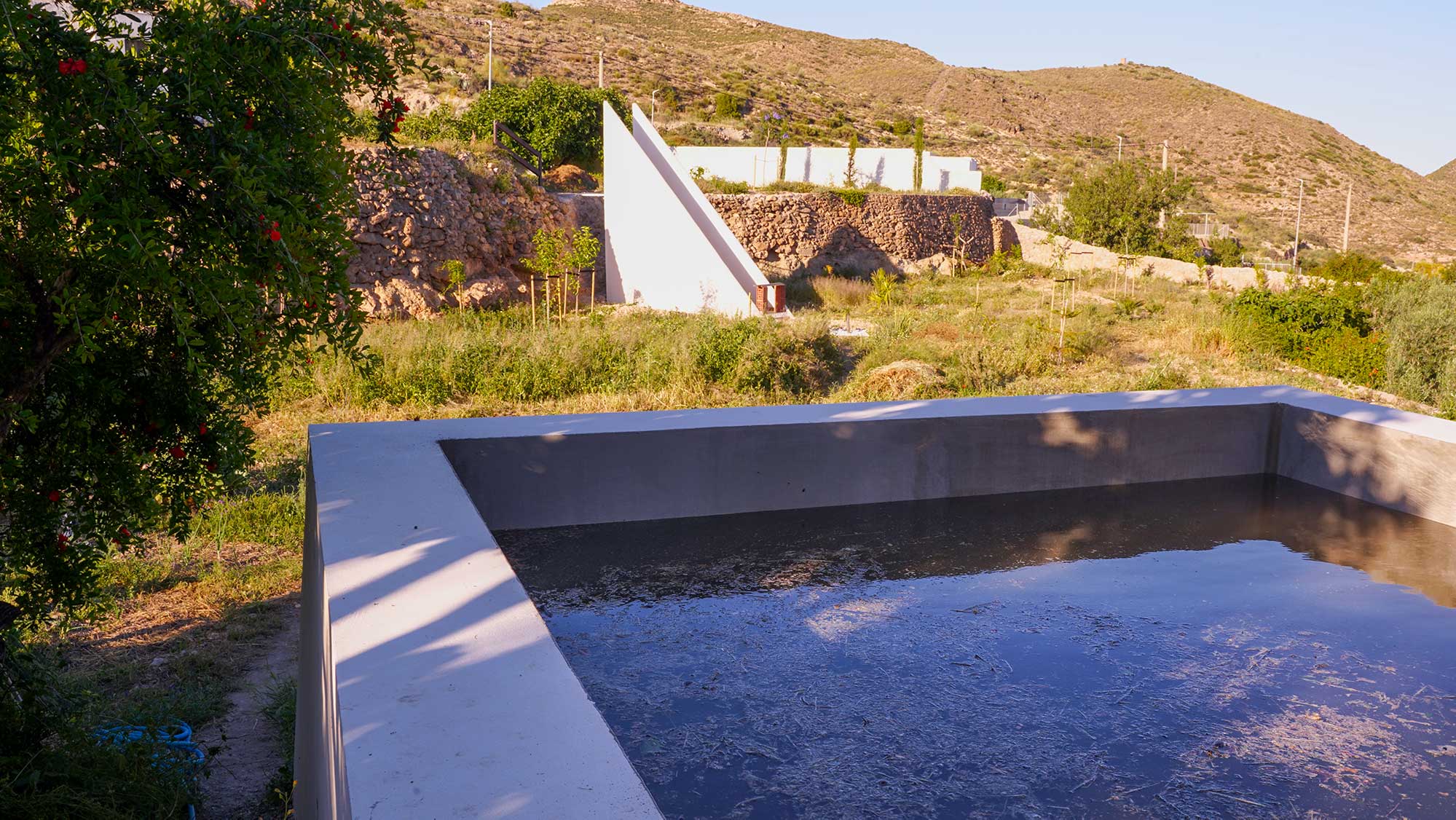
More building and improving
The pavilion, which was donated by Lillian, has been completed with bitumen roofing and a wind chime and can now be used for small gatherings, private chats, yoga or other events. We intend to surround it with flowers and to create a natural stone path to its entrance. The new kitchen and the two adjacent new guest rooms are coming off the ground quickly. The workers make long days and even come on Saturdays to work. At the moment we have one room with a private shower, and the two new rooms will be equipped with a shower as well, so the average level of comfort we can offer is improving. In the meantime, we moved the kitchen temporarily to one of the other rooms, one we used for meditations and we currently have our meditations in the room that we used for the lunch and souper. Luckily, everything falls in the right place at the right time, as the weather permits eating outside and our temporary kitchen is large enough to encompass a dining table.
And the smaller water deposit, or as we like to call it the small embalse, has been completely renovated and will soon be in use again. Its white plastered walls combine very well with the Triad of Nâm. We anticipate the return of the frogs that lived there before.
